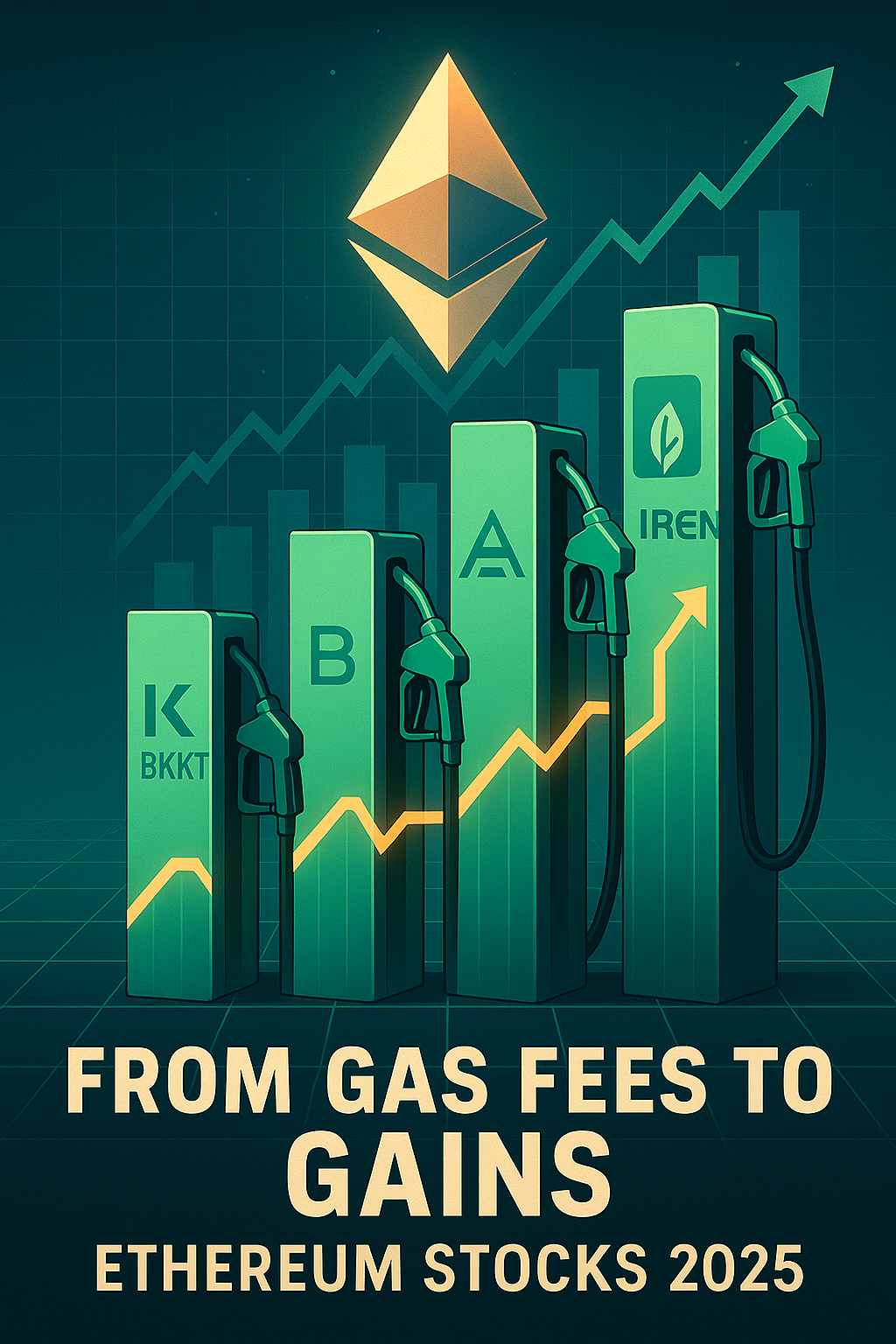
From Gas Fees to Gains: Investing in Ethereum Through Public Markets
Ethereum is the engine behind today’s Web3 economy—fueling smart contracts, DeFi protocols, NFTs, and entire Layer 2 networks. But for stock market investors, getting exposure to Ethereum’s explosive growth isn’t limited to buying ETH tokens directly. A new wave of public companies—especially smaller, under-the-radar stocks—are building, powering, or profiting from Ethereum’s expanding ecosystem.
And yes, they’re benefiting from one thing ETH users complain about constantly: gas fees.
Why Ethereum Gas Fees Are Big Business
Every transaction on the Ethereum network comes with a gas fee, paid in ETH. The busier the network, the higher the fees. In fact, during peak NFT launches or DeFi frenzies, fees can skyrocket—and that’s a good thing for companies that profit from Ethereum’s activity.
After Ethereum’s 2022 shift to Proof-of-Stake (known as The Merge), high gas fees now contribute to ETH being burned (removed from circulation), increasing its scarcity. This dynamic boosts Ethereum’s long-term value—and by extension, helps boost the value of companies building around it.
For stock investors, this opens a door to gain exposure to Ethereum’s network effects through public equities, especially small caps with high upside.
Coinbase (COIN) and Bakkt (BKKT): Ethereum’s Onramps
No surprise—Coinbase (COIN) is a dominant gateway to Ethereum. Between staking services, ETH custody, and a huge trading volume tied to ETH and ERC-20 tokens, Coinbase is effectively the retail face of Ethereum in the U.S.
But if you’re hunting for a smaller-cap play, Bakkt Holdings (BKKT) is worth a deeper look. Bakkt provides crypto custody and transaction solutions to banks, fintechs, and loyalty platforms. Ethereum is a key asset in their offering. As institutions ramp up exposure to ETH and regulatory clarity improves, Bakkt is positioning itself as the go-to infrastructure layer for enterprise-grade Ethereum access.
Stronghold Digital Mining (SDIG) and Hut 8 (HUT): Mining Turns to Compute
ETH mining may be a thing of the past, but some former miners are pivoting into new Ethereum-adjacent opportunities. Stronghold Digital Mining (SDIG), originally a Bitcoin miner, owns low-cost power plants and has begun exploring broader digital infrastructure plays—many of which could serve Ethereum validators, L2s, or AI applications running on Ethereum-linked chains.
Meanwhile, Hut 8 (HUT) is actively transforming itself from a mining company to a high-performance computing (HPC) provider. With Ethereum Layer 2 solutions and ZK-rollup technology demanding more computation, Hut 8’s data centers could soon power the very next generation of Ethereum scaling tech.
Applied Digital (APLD) and Iris Energy (IREN): The Infrastructure Builders
Ethereum’s move toward modular scaling—where different parts of the network are handled by specialized layers—requires serious compute power. Enter Applied Digital (APLD) and Iris Energy (IREN). Both companies are building large-scale data centers and compute environments designed for Web3, AI, and blockchain networks.
APLD, in particular, serves decentralized app ecosystems with high-performance computing solutions, including those used by Ethereum-based protocols. Iris Energy is expanding its scope beyond mining, building renewable-powered compute centers that align perfectly with Ethereum’s green Proof-of-Stake narrative.
These aren’t just AI stocks—they’re crypto-native infrastructure plays that could directly support the future of Ethereum’s ecosystem.
Ethereum-Linked DeFi and Custody Plays: Bitfarms, Banxa, and Galaxy Digital
The Ethereum economy is ultimately about finance—and smaller-cap companies are leaning in. Bitfarms (BITF), known for Bitcoin mining, has hinted at diversifying into ETH-related staking and DeFi operations as part of a broader growth strategy.
Banxa Holdings (BNXAF) is another strong Ethereum proxy. It enables global fiat-to-crypto payments, with Ethereum and its token ecosystem at the core of supported assets. As tokenized assets and ETH adoption grow, Banxa’s platform gains traction.
Galaxy Digital (GLXY.TO) deserves a nod too. Though traded in Canada, it operates ETH funds, offers institutional DeFi access, and has consistently invested in Ethereum-native platforms. It’s a one-stop Ethereum exposure stock for investors comfortable with international listings.
Conclusion: Ethereum Exposure Without Owning ETH? Absolutely.
From gas fees to GPU-powered scaling layers, Ethereum’s real-world utility is spawning a network of publicly traded companies that stand to benefit—without needing to buy or hold ETH directly.
Whether you’re watching custody firms like Bakkt, infrastructure builders like Applied Digital, or on-ramp innovators like Banxa, these smaller-cap stocks offer asymmetric upside tied to Ethereum’s growth. As Ethereum adoption accelerates, these equities may ride the wave from gas fees to gains—and bring their shareholders along for the ride.



Be the first to comment